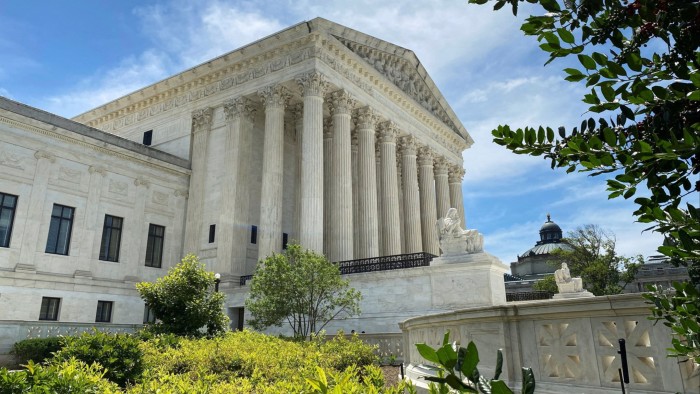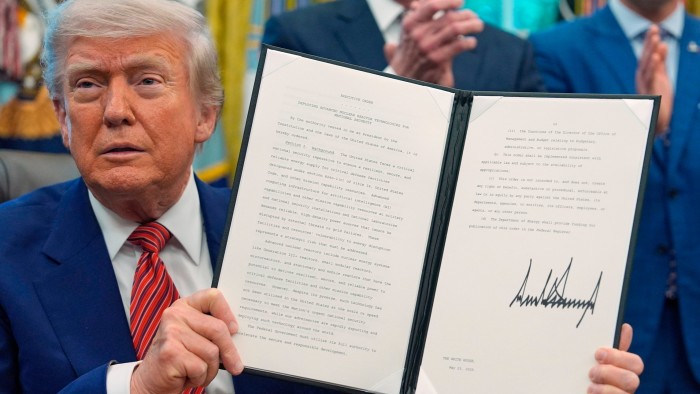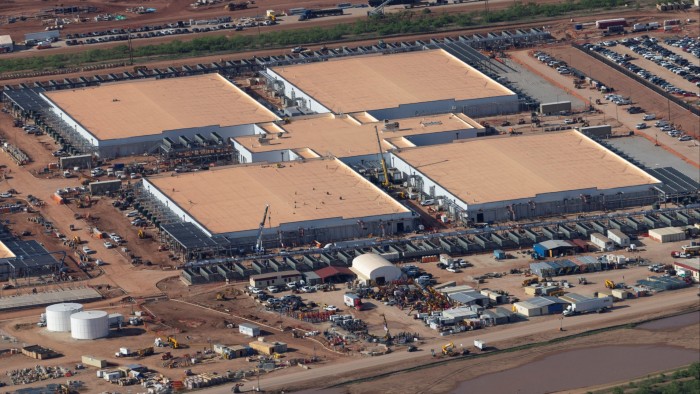Supreme Court signals it could shield Federal Reserve from Trump

Unlock the White House Watch newsletter for free
Your guide to what Trump’s second term means for Washington, business and the world
The US Supreme Court has signalled it may shield the Federal Reserve from a potential review of Donald Trump’s ability to fire officials of independent agencies, in an order that could quell concerns around the president removing the central bank’s chair.
As the country’s top court on Thursday temporarily kept in place Trump’s dismissal of members of the National Labor Relations Board and the Merit Systems Protection Board, it suggested Fed officials may be subject to stronger protections. The case is making its way through lower courts.
In the unsigned order, the Supreme Court said it disagreed with the board members’ argument that their cases implicate the constitutional protections against removal of members of the Fed’s board of governors or the Federal Open Market Committee.
“The Federal Reserve is a uniquely structured, quasi-private entity that follows in the distinct historical tradition of the First and Second Banks of the United States,” the court said.
While the Fed is the third incarnation of the US central bank, some legal scholars believe that the terms under which the first central bank — which allowed for freedom from direct political interference — still apply today.
The case is being watched as a crucial test of Humphrey’s Executor vs United States, a landmark 1935 Supreme Court decision that upheld a statute limiting a president’s power to remove an agency official to reasons of inefficiency, neglect of duty, or malfeasance in office.
Sarah Harris, former acting US solicitor-general, in February said that the Department of Justice would urge the top court to over-rule Humphrey’s Executor.
But the opinion may ease fears that the Trump administration could weaken the Fed’s independence.
“The court went out of its way to rebut the argument that its probable broad rollback of Humphrey’s Executor will endanger the Fed’s monetary policy independence,” said Daniel Tarullo, a former Fed governor who is now at Harvard Law School, adding that the opinion “certainly augurs well for the Fed”.
But Lev Menand at Columbia Law School, said the court’s supposed carve-out for the Fed as a “unique, quasi-private agency” did not “make much sense”.
“[W]hat’s alarmed people is whether Trump could fire [Fed chair] Jay Powell and other members of the Fed’s board,” he added. “While the regional Federal Reserve Banks are quasi-private, the board in DC is a public agency, there’s nothing private about it. Nor is it unique. It’s a multi-member board just like the NLRB.”
The case involving the NLRB and MSPB may well return to the Supreme Court, which would then decide whether to hear it on its merits.
Trump’s attacks on Powell, as well as remarks from National Economic Council chair Kevin Hassett in April that the president would “continue to study” whether it was possible to fire the Fed chair before his term ends in May 2026, shook investors, triggering sharp falls in equity markets.
While Trump has since said he had “no intention” to fire Powell before the end of his term, he has continued to criticise him, referring to Fed chair as “Mr Too Late” and a “major loser” for not cutting interest rates so far this year.
The Fed says it is keeping borrowing costs on hold at between 4.25 and 4.5 per cent until it can assess the impact of Trump’s tariff policies on inflation and the US labour market.






